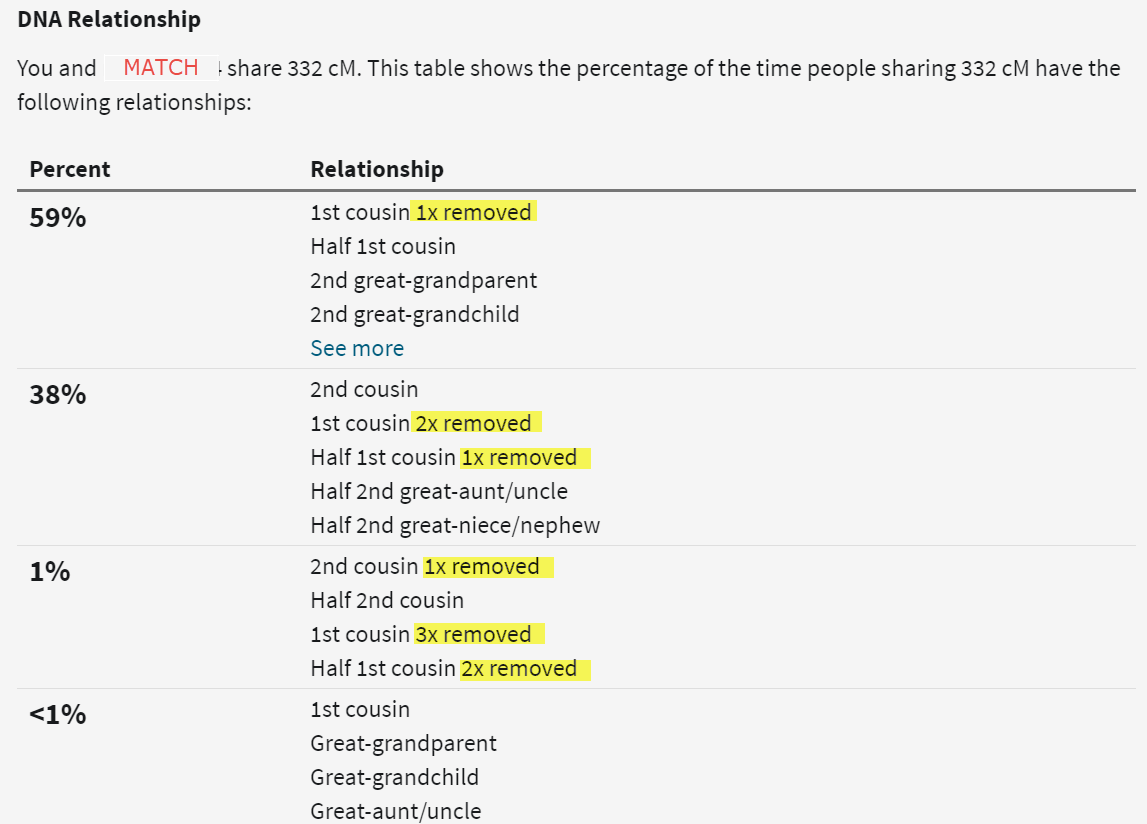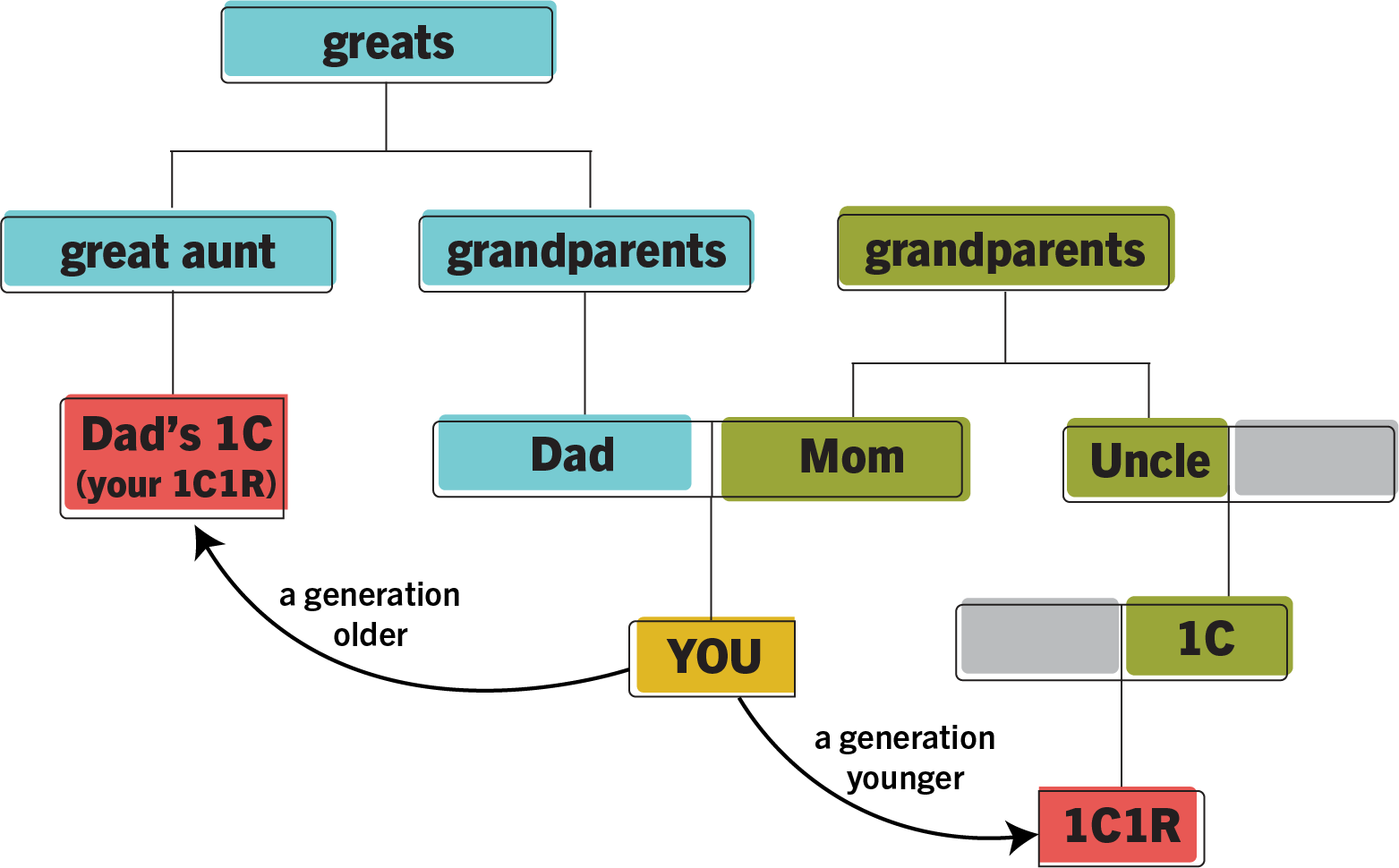Last updated: December 11, 2024
What is a first cousin once removed? We explain this relation, and how removed cousins on your family tree likely account for a TON of DNA matches.
When you see a DNA match list on your DNA testing site, you also generally see a few suggestions about how you might be related: “1st-2nd cousin,” for example. This might seem easy, at first glance. You likely know what a first cousin is: you share a set of grandparents (one of your parents is a sibling of one of your cousin’s parents). You may even know that a second cousin means you share a set of great-grandparents (one of your grandparents is a sibling of a second cousin’s grandparent).
But what’s NOT always so clear is that you have other possible relationships, too. Here’s an example: if I click on the shared DNA details for one of my 1st-2nd cousin matches at AncestryDNA, I see the chart below. Woah! They’re giving me WAY more possibilities than a first or second cousin! In fact, the option for a first cousin once removed shares the top of the list!

What you’re seeing are all the genealogical relationships that lie within the range of possibilities for the amount of DNA you share with this match. Family trees can be complicated things, with half-relationships (one shared parent) and removed relationships. In this quick article, we’re focusing on the meaning of cousin once removed relationships.
What does first cousin once removed mean?
A removed cousin is someone who is on a different generation from you. So people who are one generation younger would be on the same generation as your children. People who are one generation older would be on the same generation as your parents.
There are two ways you can be first cousins once removed (1C1R); both are illustrated below. We will start with the easier situation, where your first cousin once removed is younger than you are. That means they are on the same generation as your children. Now, think of your first cousin. Do you have them in mind? Ok, now think of one of their children. That person is YOUR first cousin once removed. That was the easy one.

Now to tackle the situation where your 1C1R is older than you. I want you to think of your dad’s first cousin. So those are the children of your dad’s aunts or uncles. Do you have one in mind? Do you see how you are THEIR first cousin once removed? You are that child of THEIR first cousin.
Why does this matter? It matters because knowing if a match is removed from you helps you to better understand how far back in their family tree you will need to go before you should run into the ancestor(s) you have in common. Very generally speaking, if they are a removed cousin who is younger than you, you will need to look further back in their family tree before you can expect to find your common ancestor. Of course, the opposite is true for a cousin who is once removed but older. You should be able to look in their tree at a more recent generation to find your common ancestor.
First cousin once removed? Half cousin? Something else?
One way to figure out how you’re related to your DNA matches is to ask them. Between the two of you–what you each know about your family tree–you might be able to figure it out. But starting (and keeping up) a conversation with a DNA match can be tricky. That’s why we wrote a guide to contacting your DNA matches. Would you like a free copy? We thought you might.


